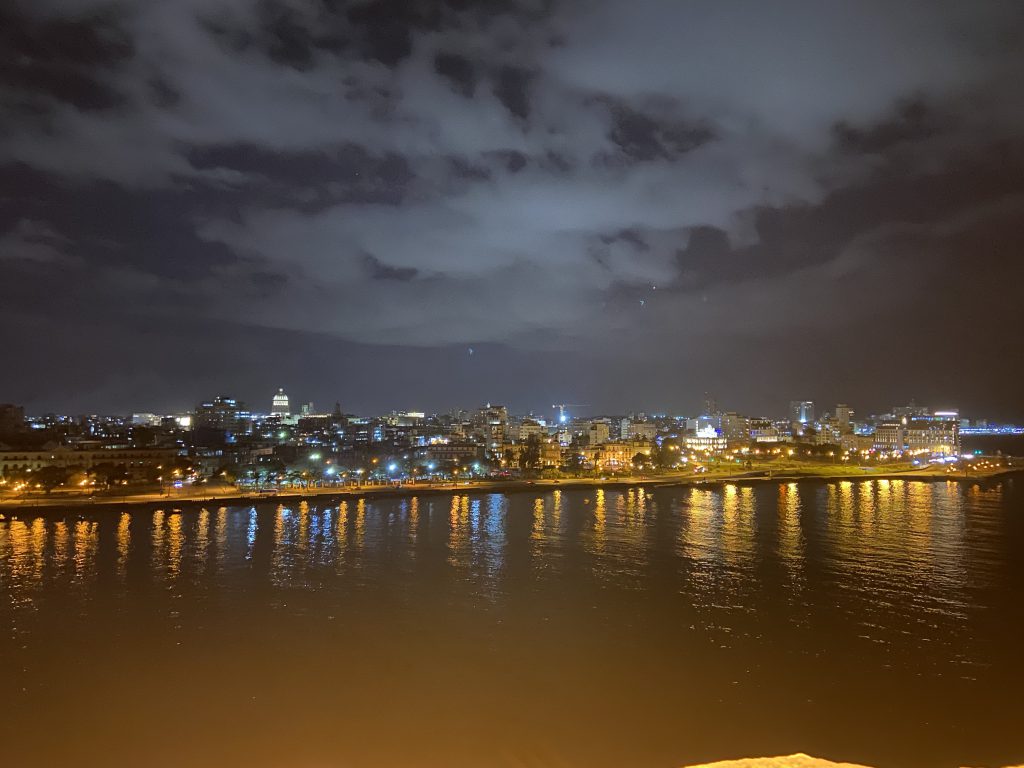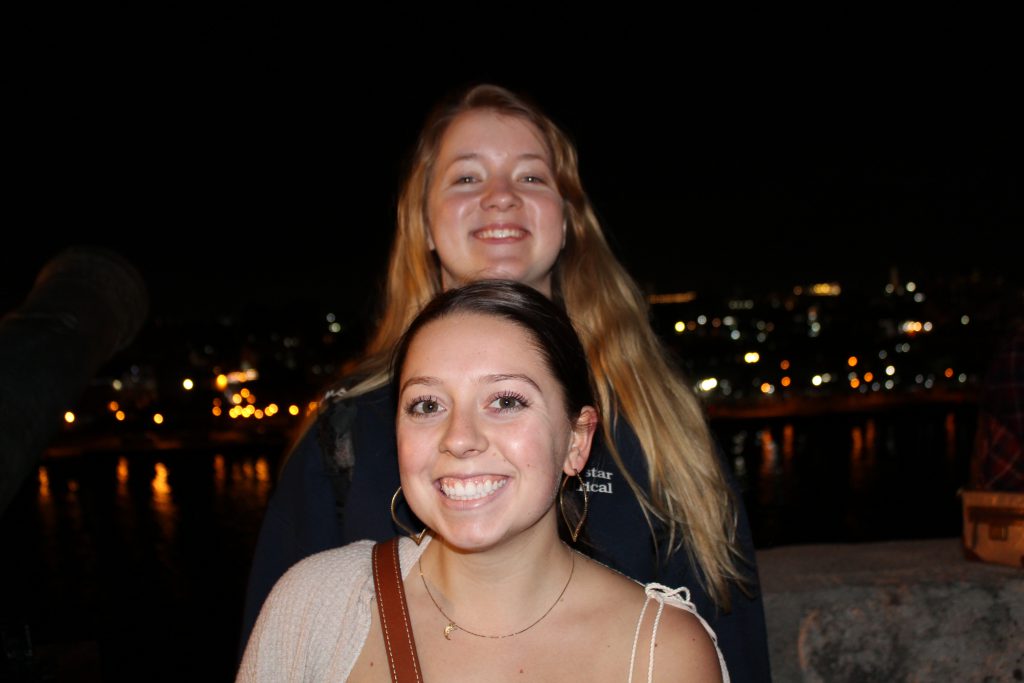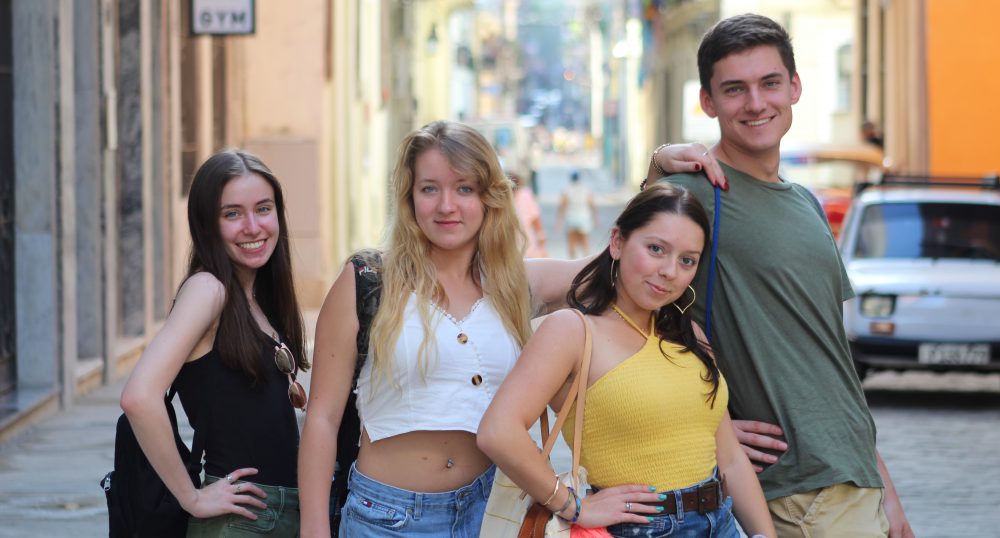The streets of Havana are full of life day and night with people – both Cubans and the Americans – singing, dancing and talking. It is a completely different way of life here. Dogs and cats roam the streets happily like they were house pets in America. People try to get our attention to ask where we are from and when they do, they are so delighted to tell us that they love Americans.
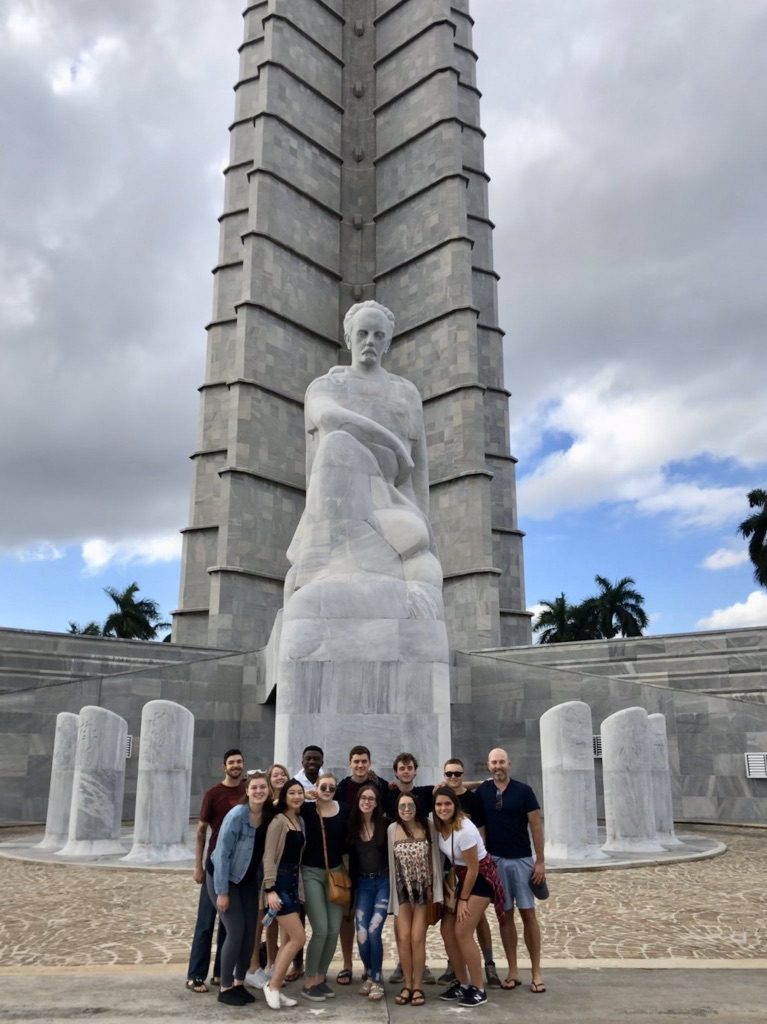
Today, January 6th, is our 3rd full day in Havana. We started our day at the Residencia with breakfast at 8am then off to our first stop of the day, the José Martí Memorial. The memorial is larger than I could ever have imagined. It is located in Revolution Square, which is the place where Fidel would give speeches and millions would gather around in the open space. The memorial has a large statue of José Marti. It reminds me of the Abraham Lincoln statue in Washington D.C (I later discovered during our tour that Lincoln had a major impact on Martí in his life and during the start of the first war for Cuban independence). Behind the statue, is the tallest building in Havana. It is in a shape of a 5-pointed star. Inside of this building each point of the star has a different little museum. Two of the points are about the life of Martí and his major accomplishments, one has the history of the Revolution, one has a new art exhibit and the last one was under construction. We learned that Martí did not actually live in Cuba for that long, yet he became a symbol of the Revolution and freedom for the Cubans. He was born in Cuba and later exiled to Spain for speaking out against the Spanish, who occupied the island at the time. Martí later lived in Mexico, Guatemala and the United States – New York City to be exact. He later died fighting for his native country during the Spanish-Cuban War, which Americans refer to as the Spanish- American War.
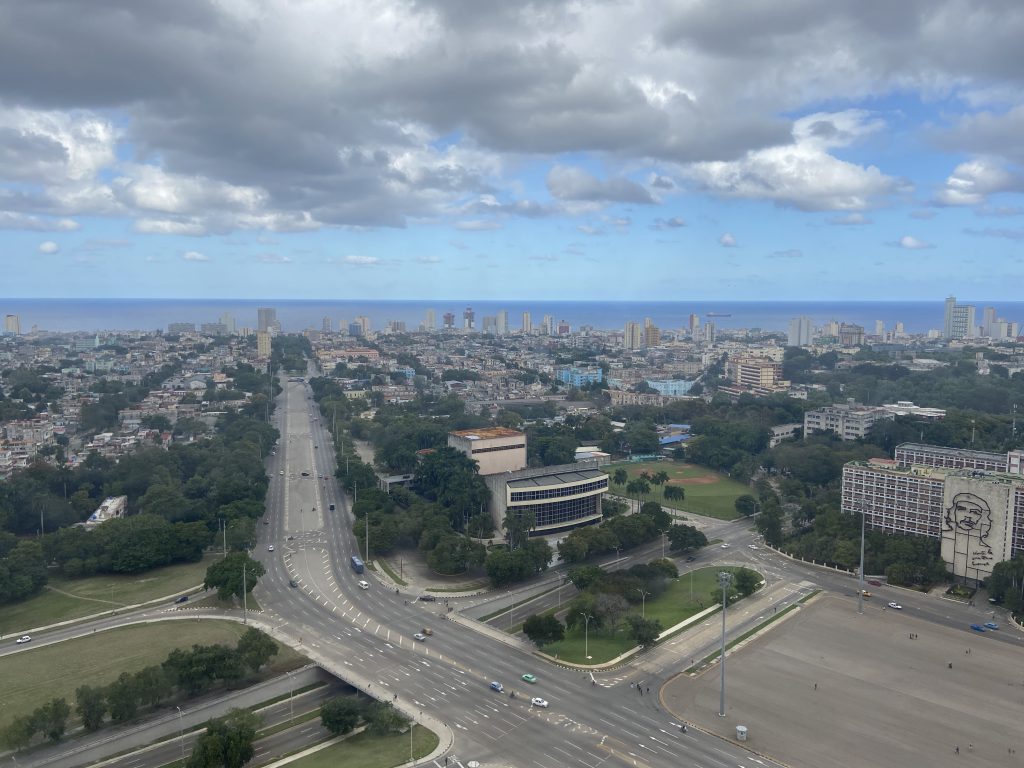
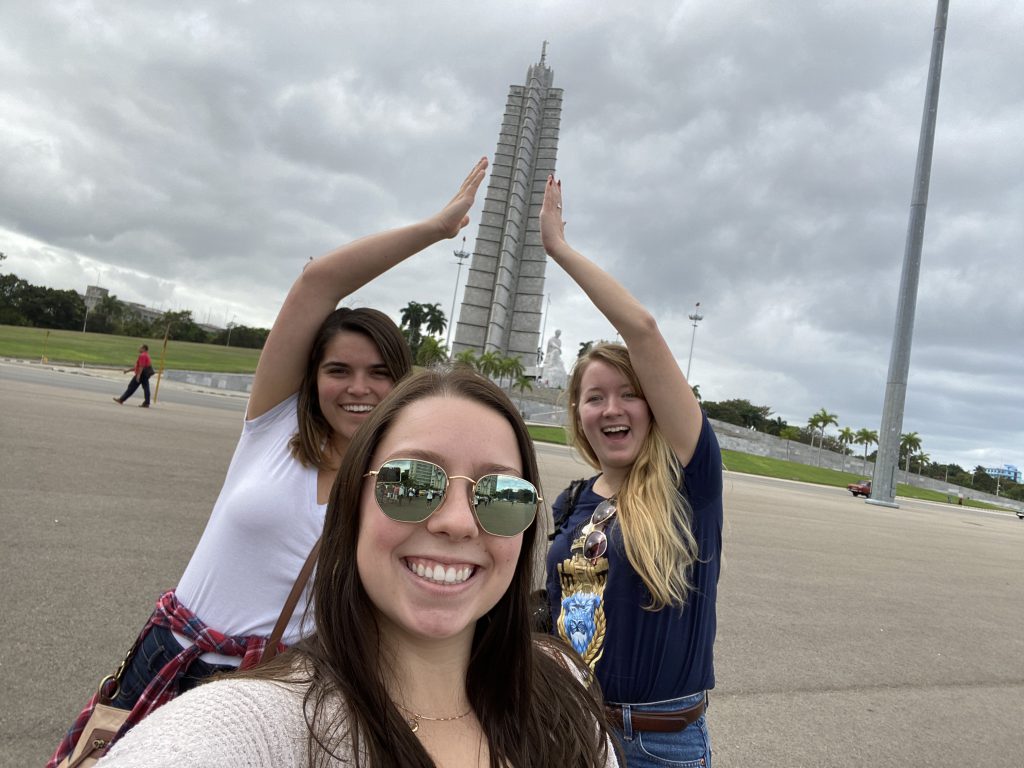
Now, we are off to our next stop of the day, CIPS (Center of Psychological and Sociological Studies) for our first lecturer of the trip. But before that we had a fabulous lunch at La Catedral, a local Cuban restaurant. For my lunch, I tried Marlin for the first time and what a great decision that was. It was so fresh and delicious. Since we landed, I have tried to eat something new each day. At CIPS, our first lecture was on José Martí. Our lecturer was so enthusiastic about the subject; you could tell by his hand movements, his tone of voice, and his words. The only problem was that he only spoke Spanish so Ana, our personal translator for the trip, translated for us. Our lecturer described the life and work of Martí. Martí was a legendary figure to all Cubans. It is difficult to find many other people who had so many titles: Martí was a poet, a writer, a translator, a professor, a revolutionary, and an activist. The lecture was only an hour long which was packed with so much information. I do not think an hour lecture could ever capture how impactful a single man was to the future of a country.
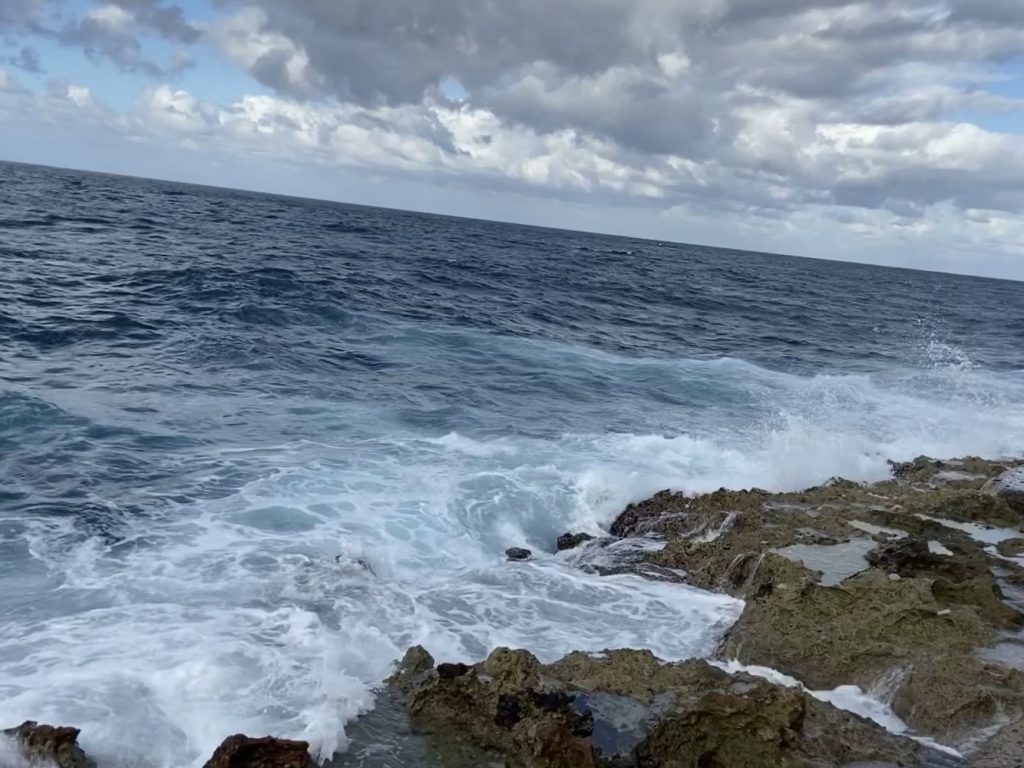
After our lecture, we had a few hours free to do whatever our hearts desired as long as we were back for dinner at 6:30pm. Mya, Vanessa, Scott and I decided to walk down to the Malécon, aka Cuba’s couch. It got very windy as we got closer to the malécon, our shirts, our hair and even my purse was flying in the wind. The waves in the ocean were some of the biggest I had ever seen in my life. They would crash again and even over the malécon almost splashing us. It was almost like a game to make sure you did not get wet. Once we ate dinner, we were off to our last stop of the day.
The last thing we did was see the cannon ceremony at the La Cabaña Fortress in Old Havana. The fortress was built in the 1700’s to help protect the city from any invaders that might have been trying to invade the city; the invaders were mostly pirates at the time. Each night there is a re-enactment ceremony of a cannon going off as if there was an invader. Ilene, our API program leader, had talked about this event all day and even said it was her favorite part of her trips to Cuba in the past, and was she right! It was nothing I could have even imagined, seeing a real cannon go off was an experience in itself. We got to the fortress about an hour before it started, as it was planned to go off at 9pm. My roommate, Mya, and I walked around the fortress looking for souvenirs, then we found Easmond (our personal photographer) so of course we got some photos. Finally, it was cannon time, the soldiers dressed in uniforms from the 1700s started walking towards us up near the edge of the fortress. The one soldier was yelling things to his fellow soldiers; some soldiers had a stick with fire at the end that later lit the cannon. About 10 minutes later right at 9pm, the cannon was lit and went off. It was so loud, I almost jumped out of my skin. The explosion of the cannon came and went in a blink of an eye, the crowd – that was a mix of local Cubans and tourist – started clapping as a finale of the flawless cannon re-enactment. It was such a unique experience, seeing a cannon go off is not something you see every day. If you ever find yourself in Havana, Cuba, I highly recommend it.
